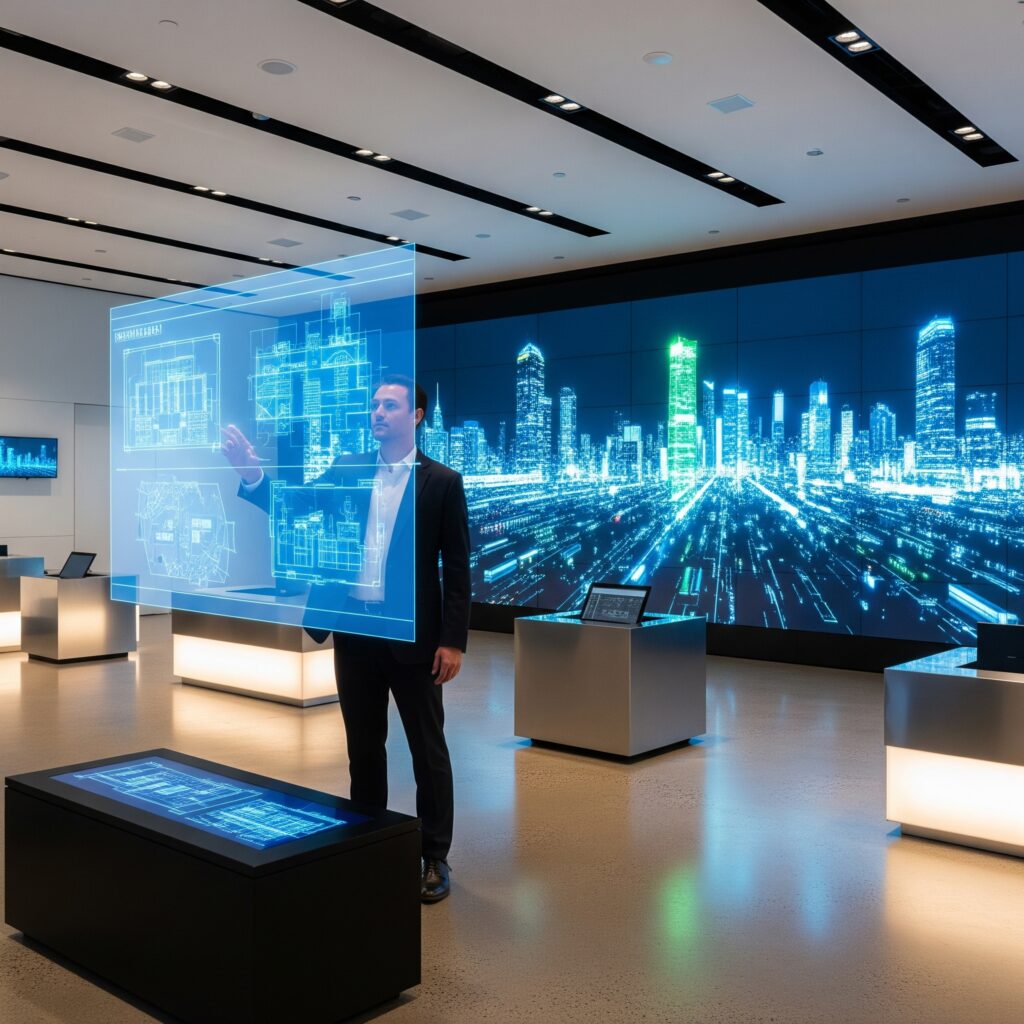From Video Walls to Virtual Worlds: The Evolution of Commercial Audio-Video Experiences

For years, the video wall has been the undisputed champion of commercial display technology. And for good reason. A well-designed video wall is a powerful tool, capable of transforming a lobby, retail space, or event into a captivating visual spectacle. But in a world where consumers expect more than just passive viewing, the video wall, while still an important piece of the puzzle, is now just the starting point.
Today, the most impactful commercial spaces are moving beyond the flat screen, embracing a new era of immersive experiences powered by 3D, augmented reality (AR), and virtual reality (VR). This isn’t just about adding a “wow factor.” It’s about creating deeper engagement, fostering stronger brand connections, and, ultimately, driving business results.
The Power of Experiential Marketing
At the heart of this shift is the concept of “experiential marketing.” Unlike traditional advertising that simply tells a story, experiential marketing invites the customer to step inside the story. It’s about creating memorable, multisensory encounters that build a lasting relationship between a brand and its audience.
Think about it:
- A video wall can showcase a product in stunning detail.
- An interactive 3D installation can let a customer pick up, rotate, and examine that same product from every angle, without ever touching the physical item.
- An AR experience can let them see how that product would look in their own home or office.
- A VR experience can transport them to the factory where the product was made or to an entirely new, branded world.
Each of these steps represents a deeper level of engagement, moving the customer from a passive observer to an active participant.
Beyond the Screen: 3D and Holographic Displays
While video walls have become a standard for large-scale visuals, new technologies are making 3D and holographic experiences more accessible and effective than ever. These aren’t the gimmicky 3D movies of the past. Modern 3D displays use advanced technology to create visuals that appear to float in mid-air, drawing the eye and demanding attention in a way a flat screen simply can’t.
Imagine a retail window display with a spinning, holographic version of a new product. Or a museum exhibit where historical artifacts are brought to life in a stunning 3D projection. These technologies are breaking down the barrier between the digital and physical worlds, creating a sense of wonder that keeps people talking and sharing.
The New Reality: AR and VR for Commercial Spaces
The real game-changer is the integration of AR and VR. These technologies are no longer just for gaming; they are powerful commercial tools with a wide range of applications:
- Virtual Showrooms: The traditional showroom is limited by its physical location and the products it can display. A virtual showroom, on the other hand, can be accessed from anywhere in the world and can showcase an entire product line in a single, interactive experience. Customers can customize products, change colors, and see every option without needing a single physical sample.
- Interactive Installations: Using AR, a commercial space can be transformed into an interactive playground. Visitors can point their smartphones at a blank wall and see it come to life with branded animations, informational overlays, or even a scavenger hunt. This turns a static environment into a dynamic, personalized experience.
- Training and Simulation: In a more B2B context, VR can be used to create immersive training simulations for employees, from practicing complex machinery operations to running through safety procedures in a risk-free environment. This is a cost-effective and highly engaging way to educate and train staff.
The evolution of commercial audio-video is no longer just about the quality of the image or the size of the screen. It’s about creating an experience that resonates. By embracing the full spectrum of immersive technologies—from the power of the video wall to the possibilities of 3D, AR, and VR—businesses can create connections that are not only seen, but felt. This is the future of commercial spaces, and we are excited to be at the forefront of this transformation.

